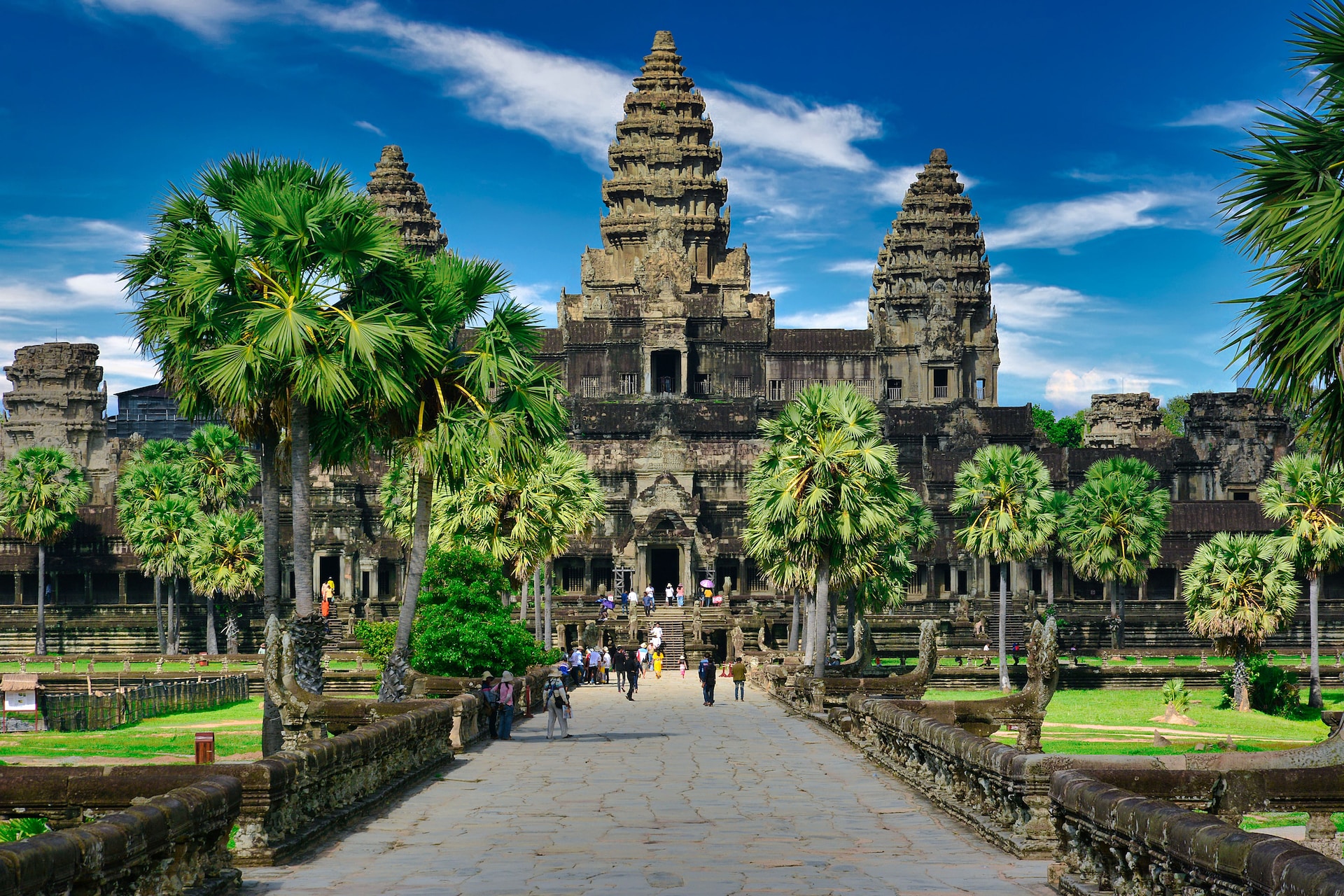Angkor Wat, a symbol of Cambodia’s historic grandeur and spiritual profundity, is one of Southeast Asia’s most significant archaeological sites. This ancient temple complex, originally constructed in the early 12th century, continues to captivate scholars, tourists, and spiritual seekers alike. Spanning over 400 square kilometers, it represents not only a remarkable architectural achievement but also a profound testament to the cultural and religious heritage of the Khmer Empire.
Historical Context
King Suryavarman II commissioned the construction of Angkor Wat in the early 12th century as a Hindu temple dedicated to Vishnu. It was a deviation from the Shaiva tradition of previous Khmer kings. This architectural marvel was both a temple and a mausoleum for the king, encapsulating the essence of Khmer architecture and symbolizing Mount Meru, the home of the gods in Hindu mythology.
Over time, Angkor Wat underwent a religious transformation along with the rest of the empire, transitioning into a Buddhist site by the end of the 12th century. This shift reflects the region’s complex religious history, where Hinduism and Buddhism have intertwined over centuries.
Architectural Splendor
The temple complex is renowned for its grandeur and intricate design. The main temple stands within a massive moat and an outer wall measuring 3.6 kilometers in circumference. Visitors are often struck by the sheer size of the complex, with its towering spires and expansive galleries.
The Five Towers
The five central towers of Angkor Wat, arranged in a quincunx, are its most iconic feature. They symbolize the peaks of Mount Meru, resonating with the Hindu cosmology. The central tower, rising 65 meters above the ground, is the heart of the temple, showcasing both religious significance and architectural brilliance.
Bas-Reliefs and Carvings
The walls of Angkor Wat are adorned with extensive bas-reliefs and carvings, illustrating various Hindu myths, including the Churning of the Ocean of Milk and scenes from the Ramayana and Mahabharata. These carvings are not only artistic masterpieces but also serve as historical records, providing insights into the daily life and beliefs of the Khmer people.
Engineering Marvel
Angkor Wat’s construction required advanced engineering skills. The builders used laterite and sandstone, transporting these materials from quarries many kilometers away. The precision of the stonework, without the use of mortar, is a testament to the skill of its craftsmen. Additionally, the complex water management system, including moats and reservoirs, highlights the Khmers’ understanding of hydrology.
Spiritual Significance
For centuries, Angkor Wat has been a place of spiritual importance. Originally a Hindu temple, it seamlessly incorporated Buddhist elements, reflecting the region’s syncretic religious practices. Today, it remains an active site of worship and pilgrimage, embodying the enduring spiritual legacy of the Khmer civilization.
A Living Monument
Unlike many ancient sites, Angkor Wat is not a relic of the past but a living monument. Monks still chant in its corridors, and the local community engages with the temple in various religious and cultural activities, keeping the ancient traditions alive.
Tourism and Preservation
Angkor Wat is Cambodia’s premier tourist attraction, drawing millions of visitors annually. This influx presents both opportunities and challenges. While tourism has contributed significantly to Cambodia’s economy, it also raises concerns about the preservation of the site.
Challenges of Conservation
The conservation of Angkor Wat is a complex task, involving international collaboration and continuous efforts to balance preservation with tourist access. Environmental factors, such as water table fluctuations and natural wear, add to the challenge.
Sustainable Tourism
Efforts are underway to promote sustainable tourism, ensuring that visitors experience the site responsibly and respectfully. This includes regulating visitor numbers, providing education on the site’s historical and cultural significance, and investing in local community development.
Conclusion
Angkor Wat stands as a monumental testament to the ingenuity and spirituality of the Khmer Empire. Its architectural magnificence and historical depth make it a tourist destination and a pilgrimage site for those seeking to connect with a past civilization’s grandeur and ethos. As we walk through its corridors and gaze upon its spires, we are reminded of the enduring legacy of human creativity and devotion. Preserving and respectfully engaging with Angkor Wat is crucial in keeping this heritage alive for future generations to appreciate and learn from.
This remarkable site continues to be a source of national pride for Cambodia and a symbol of human achievement on a global stage. Its enduring beauty and historical significance make Angkor Wat a jewel of Cambodia and a treasure for humanity.
